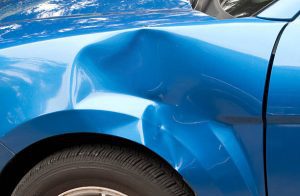How to Repair Rust on Your Car Without Welding


How to Repair Rust on Your Car Without Welding


Introduction
As a car owner, dealing with rust can be a frustrating and concerning experience. Rust not only affects the appearance of your vehicle but can also lead to structural damage if left untreated. While traditional rust repair methods often involve welding, not everyone has access to the necessary tools or expertise for this task. The good news is that there are alternative methods to repair rust on your car without welding. In this article, we will explore effective techniques that can help you tackle rust and prevent it from spreading further.
Materials You’ll Need
To repair rust on your car without welding, gather the following materials:
Safety goggles and gloves
Rust converter or neutralizer
Sandpaper (various grits: coarse and fine)
Body filler (Bondo)
Putty knife
Self-etching primer
Paint matching your car’s color
Clear coat
Wax and grease remover
Clean rags or microfiber cloths
Step-by-Step Rust Repair Guide
1. Safety First
Before you begin, prioritize your safety. Put on safety goggles and gloves to protect yourself from any potential harm while working with rust and chemicals. Additionally, find a well-ventilated area to minimize exposure to fumes from the products you’ll be using.
2. Prepare the Affected Area
Start by cleaning the rusted area thoroughly. You can use a mixture of warm water and mild dish soap to wash the affected area. Make sure to remove any dirt, oil, or debris that may interfere with the repair process. Use a clean cloth or rag to dry the area completely.
3. Remove Rust Manually
To remove the rust manually, use coarse sandpaper or a wire brush. Gently sand down the rusted surface until you reach bare metal. Be patient and thorough during this step, ensuring that all the rust is removed. Then, switch to a finer grit sandpaper to smooth the edges around the affected area.
4. Neutralize the Rust
To prevent further rusting, apply a rust converter or a homemade rust neutralizer to the affected area. For a DIY rust neutralizer, mix equal parts of white vinegar and baking soda to form a paste. Apply the paste onto the rusted surface and let it sit for about 30 minutes. Then, scrub the area with a brush and rinse it with water. Dry the area with a clean cloth.
5. Apply Body Filler (Bondo)
If there are any pits or holes left after treating the rust, you can use a body filler, commonly known as Bondo, to fill them. Follow the manufacturer’s instructions for mixing the Bondo and applying it to the affected area. Use a putty knife to shape the filler and make it level with the car’s surface. Allow the Bondo to dry completely before proceeding.
6. Sand the Filler
Once the Bondo has dried, use sandpaper to smooth the surface and blend it with the rest of the car’s body. Start with coarse sandpaper and gradually switch to finer grits until you achieve a smooth and even surface.
7. Prime the Repaired Area
Before painting the repaired area, apply a coat of self-etching primer. This type of primer enhances adhesion to the metal surface and provides additional protection against future rust formation. Follow the manufacturer’s instructions for drying time.
8. Paint the Area
Now it’s time to match your car’s color and paint the repaired area. You can obtain the matching paint from an automotive store or request it from your car’s manufacturer. Shake the paint can well before application, and use light, even coats to avoid drips. Allow each coat to dry before adding the next one. You may need to apply several coats for proper coverage.
9. Apply Clear Coat
To provide a glossy finish and protect the newly painted surface, apply a clear coat after the paint has dried completely. Clear coats also help to blend the repair with the rest of the car’s bodywork. Follow the manufacturer’s instructions for application and drying time.
Tips for Rust Prevention
1. Regular Car Wash
Frequent car washes help remove dirt, salt, and other corrosive materials that contribute to rust formation.
2. Wax Your Car
Applying wax to your car’s surface creates a protective barrier against moisture and other elements, reducing the likelihood of rust.
3. Address Scratches and Chips
Tackle scratches and paint chips as soon as you notice them. They can expose the metal underneath, making it susceptible to rust.
4. Rust-Proofing Treatment
Consider getting a professional rust-proofing treatment for your car, especially if you live in an area with harsh weather conditions.
5. Park Indoors
Whenever possible, park your car in a garage or covered area to shield it from the elements and reduce rust risk.
Conclusion
Repairing rust on your car without welding is achievable with the right techniques and attention to detail. Regular maintenance and rust prevention practices are essential to keep your vehicle looking great and ensure its longevity. By following the steps outlined in this guide and incorporating rust prevention tips, you can confidently address rust issues and preserve the integrity of your car’s body.
Remember, if you ever feel unsure about the extent of rust damage or how to proceed with repairs, consult with a professional auto body technician for guidance and assistance.








